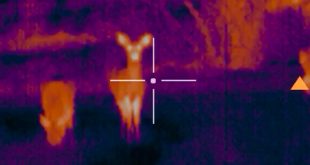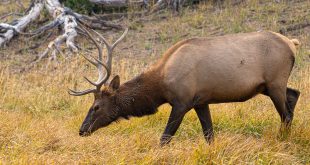The 12 member elk management citizen advisory group that was formed this year has been meeting the last few months with the hopes to solve some of Montana’s elk management problems. One thing that has come up to help curb the hunting pressure in Montana is to make hunters choose their season. As most of you know, Montana’s general season is perhaps the longest in the country. Archery starts the Saturday before Labor Day and goes for six weeks into October. There is a week off for the youth hunt then general rifle starts the last Saturday in October and finishes up five weeks later, the Sunday after Thanksgiving. Then there is the 10 day heritage muzzleloader hunt after a week long break after general rifle. Then some late seasons stay open into February. That is a long season and a lot of pressure. No wonder all the elk end up on private property!
The citizen advisory group is in place to debate how to manage some burgeoning elk populations and difficulties with public access. A big topic in the Montana hunting community has been overcrowding on public lands. Most of these hunters are residents as records have shown. In 2011, roughly 39,000 resident base hunting licenses were sold. There were 87,000 sold in 2021. This is just the tip of the iceberg of the increased hunting pressure on public land the last 10 years.
An even larger problem is that the number of elk on public land (western Montana) has decreased dramatically and the elk on the mostly private part of the state (eastern Montana) have increased over the last 30 years. So where are hunters going to gravitate to? Where the elk are!
Also brought up in the citizen advisory group by a concerned citizen and public land elk hunter follows… “One of the hardest hit areas in Region 1 is the Great Bear and Bob Marshall wilderness areas. Historical data from the 1920’s – 1950’s show elk populations on the Flathead National Forest which corresponds largely to the Bob Marshall Elk Management Unit (districts 130, 140, 141, 150) fluctuated between 4,000 – 6,000 elk and the annual elk harvest ranged between 700-1,800 animals. Today this area is home to a mere 300 elk when surveyed in 2019. The historic harvest data for the Bob Marshall Elk Management Unit ranged from 700-1,800 elk, FWP harvest records for 2021 record 89 elk being harvested. The elk count data available online from 2008-2019 shows a reduction in elk numbers in the Bob Marshall Elk Management Unit from 603 to 300 animals. A reduction of 50% and this is getting little to no attention from the department. When local biologists are contacted, you’ll hear “elk populations in these districts are stable or slightly increasing”, this is simply not true and the data shows it. This is greatly due to the rise of the grizzly bear and wolf populations, and little is being done about that on a governmental level.
As you can see, Montana FWP is in a very tough spot when it comes to solving this elk problem and hunter access problems alike. But what is the answer? Limit hunters per season or bolster elk herd growth in the vastly public western part of the state to accommodate the increased hunter pressure?
What’s your take?
Sources:
(Historic Data per “The FlatheadStory” by Charlie Shaw, Shaw was an USFS Ranger on the Flathead National Forest from 1922-1953,
https://foresthistory.org/research-explore/us-forest-service-history/u-s-forest-service-publications/region-1-northern/the-flathead-story/
 Eastmans' Official Blog | Mule Deer, Antelope, Elk Hunting and Bowhunting Magazine | Eastmans' Hunting Journals
Eastmans' Official Blog | Mule Deer, Antelope, Elk Hunting and Bowhunting Magazine | Eastmans' Hunting Journals






This is just another way for the fish and game in montana to take something away from us without doing there due diligence it’s not even due diligence there not doing there job absolutely ridiculous. I’m an avid hunter and apparently I mustv been hunting where those 300 elk were in the Bob Marshall. I’m guessing they count elk like they count mule deer… no faith in mt fwp